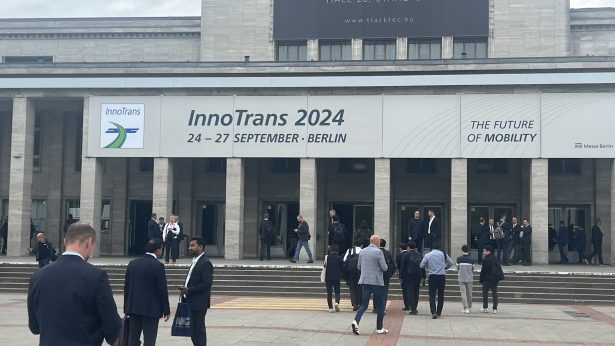Passenger rail in the United States has entered an important phase of development. Over the past few years, significant groundwork has been laid, driven by new federal initiatives and promising ridership numbers.
But this momentum can’t be taken for granted. Continued investment and development are key to realizing the full potential of passenger rail in the U.S.
Progress So Far: Laying the Foundation
One notable development is the Federal Railroad Administration’s (FRA) Corridor Identification Program (Corridor ID). Introduced as part of the Bipartisan Infrastructure Law in 2021, this program has provided localities with grants to research and plan future intercity passenger rail routes. With $8.2 billion awarded for passenger rail projects and 69 corridors selected for future service planning, the groundwork for expanding rail service is already underway. The Corridor ID program represents a critical step forward, enabling regions to plan for a more connected future.
Amtrak also saw a banner year, reporting record ridership of 32.8 million passenger trips and an increase in total operating revenue, up 7% from 2023. “These numbers highlight the growing demand for efficient rail travel. The fact that ridership is at an all-time high sends a clear message: the appetite for passenger rail is stronger than ever,” says Matthew Delaney, government and public affairs manager for RSI. “Now is the time to lean in to progress and continue forward momentum as passenger rail realizes its full potential in the U.S.”
The Economic and Social Value of Rail Investment
Investing in passenger rail offers far-reaching benefits. According to the American Public Transportation Association (APTA), for every $1 billion invested in high-speed rail, 24,000 jobs are created across various sectors. Beyond urban centers, the impact of these investments extends into rural areas, creating jobs and revitalizing local economies. Additionally, APTA has found that for every $1 invested in public transportation, $5 is generated in economic returns, amplifying the broader value of these projects for cities and states.
These economic gains go hand-in-hand with passenger rail’s ability to interconnect regions, fostering economic opportunities that would otherwise be out of reach. As new rail corridors emerge, cities and smaller towns alike gain access to broader markets, increased tourism, and improved mobility for workers and businesses. The ripple effects of rail investments cannot be overstated, touching nearly every part of the economy.
Risks of Stalling Progress
Despite positive developments, there is still a risk of stalling if investments and support wane. Halting progress now would not only squander economic and environmental benefits, but also leave the U.S. lagging behind countries like Japan and much of Europe, where frequent intercity rail service is the norm. The U.S. would miss out on opportunities to create more resilient transportation systems.
Failing to build on the successes of the past few years could leave newer corridors struggling to reach their full potential. For instance, Amtrak’s Chicago to Minneapolis route, which exceeded ridership expectations, shows that with the right investment, rail can be viable and profitable across the country. The route is one of the few outside the Northeast corridor to operate at a profit, making it a critical success story for future rail development.
Addressing Spending Efficiency and Long-Term Strategies
One of the ongoing challenges in passenger rail is ensuring spending efficiency. Budget overruns and project delays are issues that need to be addressed at a systemic level. Improving procurement processes, streamlining regulatory frameworks, and fostering greater collaboration between federal, state, and private entities are essential steps to ensure dollars are used effectively.
Looking ahead, the concept of the “Goldilocks Zone” offers a strategic focus for future rail investments. This refers to distances between 150 and 500 miles—too short to fly but too long to drive comfortably. Rail is ideally suited for these distances; if the U.S. can successfully develop routes within this zone, it could prove the viability of expanded rail networks in other regions. Corridors like Chicago to Minneapolis already demonstrate how effective rail can be in this range, offering convenient, more sustainable alternatives to driving or flying.
RSI’s Commitment to Passenger Rail
RSI recognizes the potential in passenger rail, for reasons mentioned above and more. Recently, the association developed a Passenger Rail Working Group, led by Marc Buncher (chair), president and CEO of Siemens Mobility North America, and Chris Zappi (vice chair), senior director of global strategy and marketing at Wabtec. This group formally kicked off in 2024 and will build on the progress RSI has made in this space throughout 2025.
“We see great potential in the passenger rail space, not only because of the economic benefits it will bring to the U.S., but because of the impressive knowledge and experience our network of freight experts can bring to the table,” says Patty Long, president of RSI.
Throughout 2024, RSI has been engaging in the passenger rail space, making connections at industry events, including InnoTrans 2024 in Berlin, and creating strategic partnerships with Amtrak, APTA, Metra, Chicago Transit Authority, U.S. Coalition for High Speed Rail, Coalition for the Northeast Corridor, and many others. At its annual event, RSI debuted its first-ever passenger rail education track, attracting new participants and featuring speakers from RSI members and key stakeholders.
“This step forward with passenger rail marks a new, exciting era for RSI,” Buncher says. “It truly makes the association a leader for the rail ecosystem at large. There is such a wealth of expertise within our current membership of freight supply companies; I am confident that together there is much progress we can make.”
The Road Ahead
U.S. passenger rail is on the right track, but still in its early stages. Record ridership, successful new routes, and investments through programs like Corridor ID highlight the untapped potential of rail. But sustaining this momentum will require continued focus, collaboration, and investment. “More passenger rail means more jobs, economic growth for communities, and mobility that improves quality of life—and less traffic! The rail industry can’t afford to miss the opportunity to demonstrate the value that passenger rail delivers to the nation,” Zappi says.
About the Railway Supply Institute (RSI)
The Railway Supply Institute (RSI) is dedicated to advancing safety, innovation, technology, and sustainability within the freight and passenger railway supplier industry, both in North America and global markets. As the voice of the industry, RSI strategically engages in critical and urgent industry matters by leveraging the technical expertise of our members to advocate in the legislative and regulatory arenas, foster education, host impactful events, and facilitate networking opportunities. For more information visit www.rsiweb.org, follow RSI on Twitter and LinkedIn.

